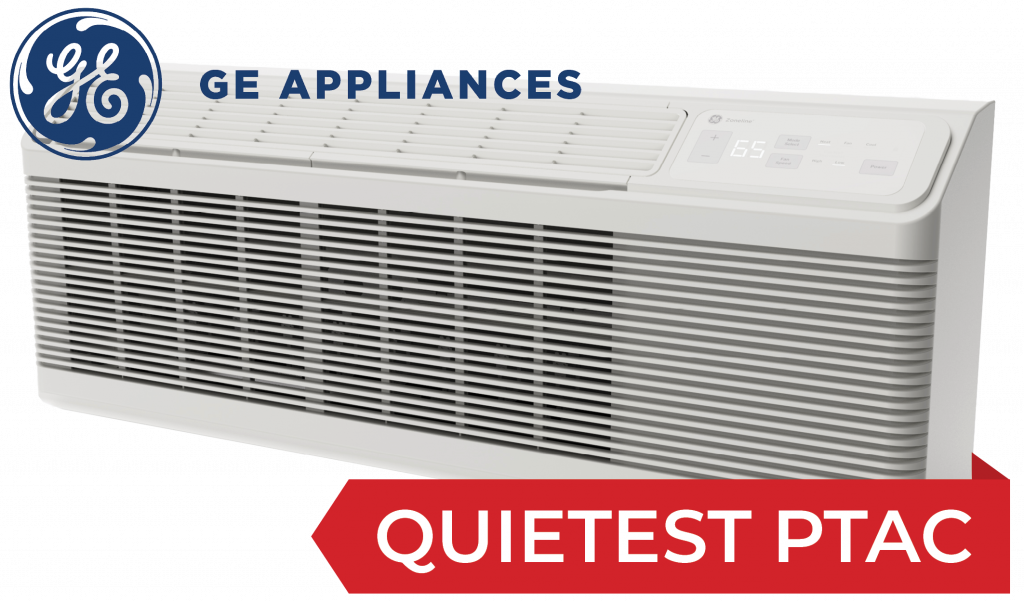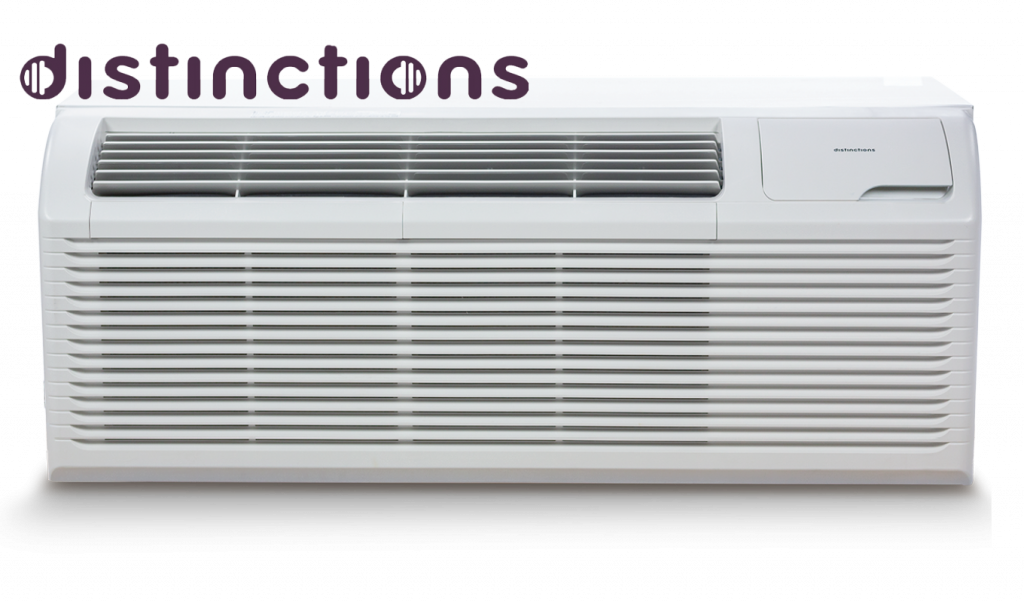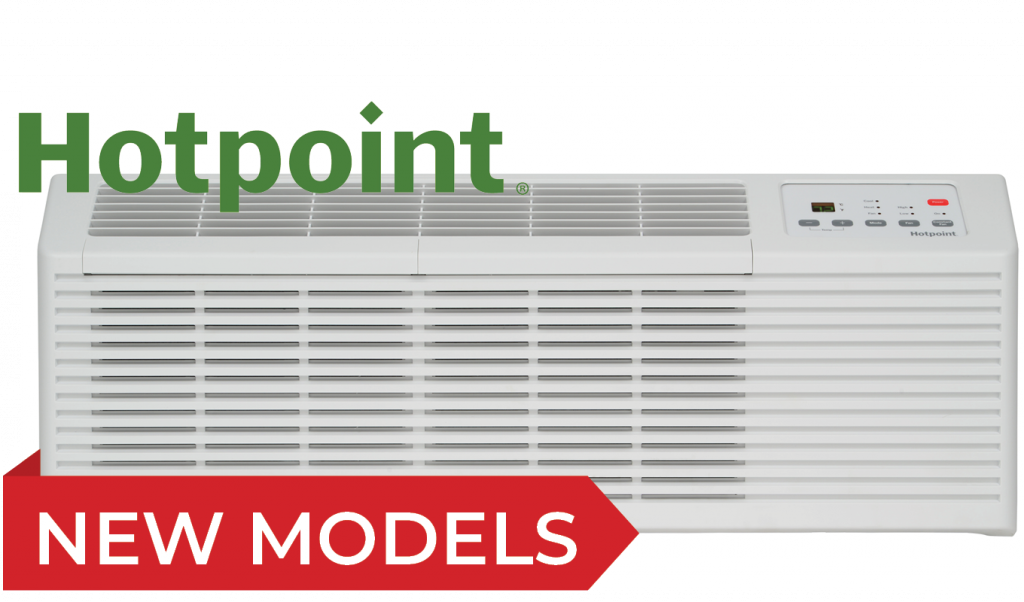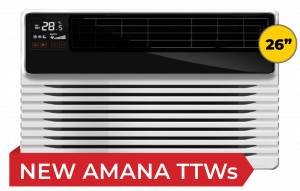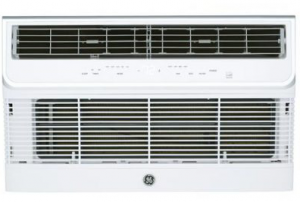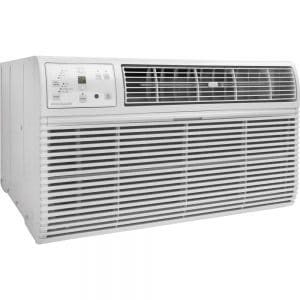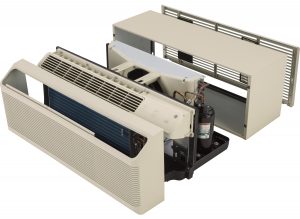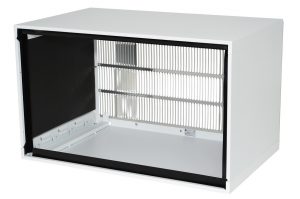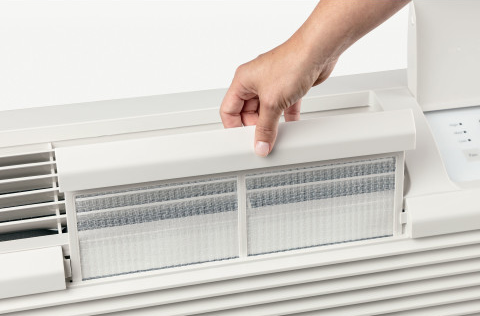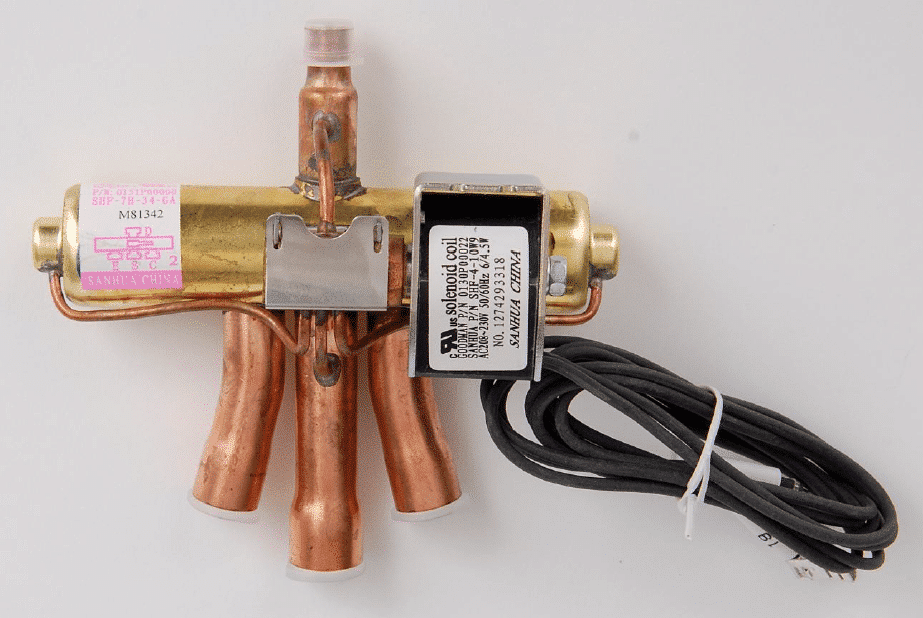Allied Appliance is a Wholesale Distributor Offering the Lowest Prices on Top Brands. Give Us a Call at 1-800-991-8480.
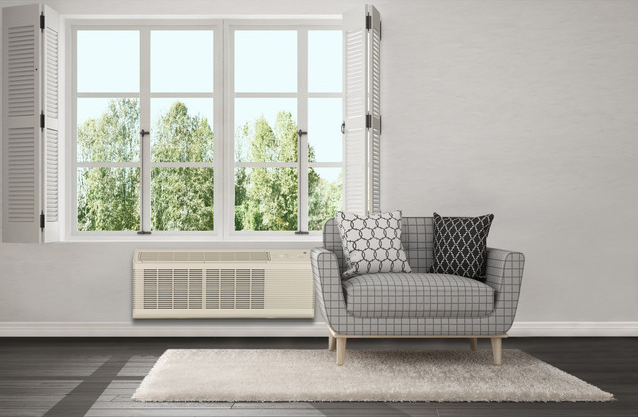
Packaged Terminal Air Conditioner (PTAC)
Packaged Terminal Air Conditioner (PTAC) units are commercial grade air conditioners that offer high-quality construction and customizable settings to meet even the pickiest guests’ climate control demands. These heating and cooling units are easily installed directly through a wall and can typically be found in hotel/motels, multi-family communities and assisted living facilities. In these locations, quiet and comfortable rooms are key to guest satisfaction.
PTAC’s provides warm air through an electric resistance heater. The majority of major brands come in the same standard size – 42″ wide, 16″ high, and 13 3/4″ deep – which will fit into most wall sleeves/grilles.
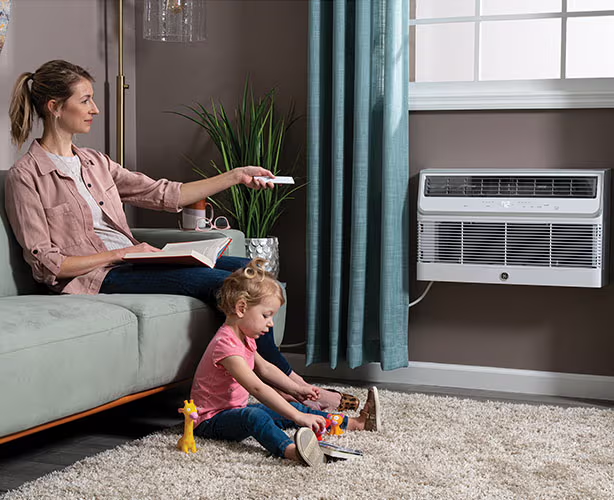
Through-the-Wall Air Conditioner (TTW)
Through-the-Wall (TTW) air conditioners will quickly cool rooms and other spaces using outdoor air to create airflow while still being environmentally friendly. They are similar to window ACs, but are installed through an exterior wall, using a wall sleeve for support. While installation on this kind of unit is more permanent, TTW air conditioners are much more secure and doesn’t allow for the kind of air seepage you typically get with window units. They can also be installed higher up or lower down on the wall to fit into your room or suite depending on space. If you plan on using the unit year-round, consider a model with both cooling and heating abilities.
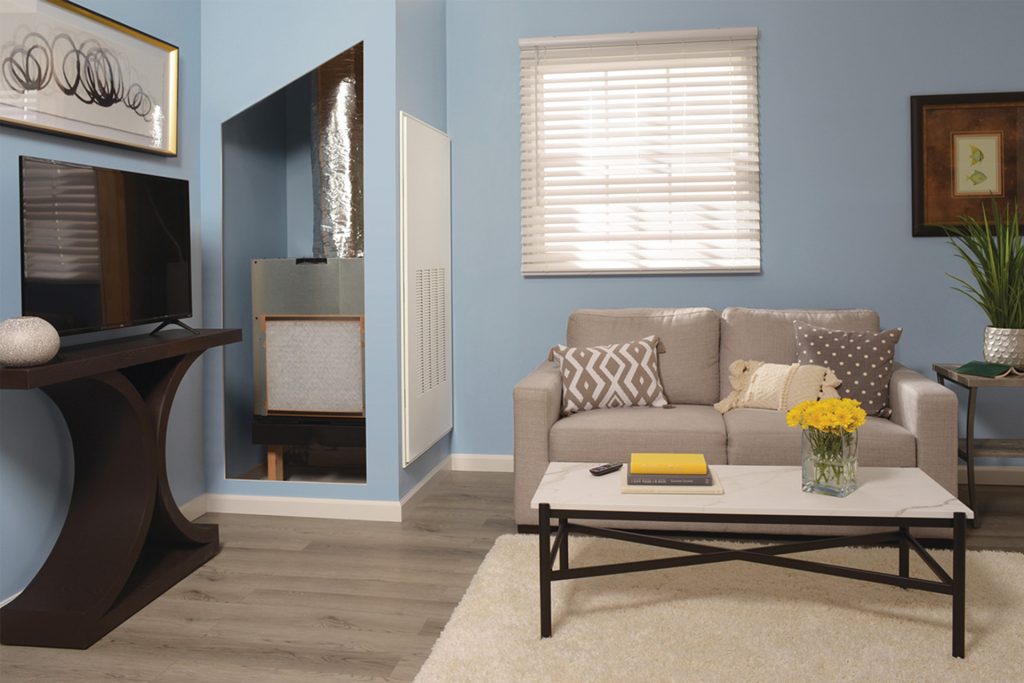
Vertical Terminal Air Conditioner (VTAC)
A Vertical Terminal Air Conditioners (VTAC) provide a home-like appearance to your room, quieter operation and a wall thermostat that helps guests feel right at home. Rather than a traditional PTAC or TTW a/c unit, VTACs do not need to be mounted under or near a window. It is still a through-the-wall, packaged terminal unit, but instead of being 42″ wide and installed in under the window in the middle of the room, it has a vertical configuration and is installed in a closet-like corner enclosure. Curtains can hang all the way to floor and it makes more room design options available.
They are designed as an alternative to large, expensive central systems with none of the location restrictions of a traditional window unit. Because the unit is ducted, it can serve a single room or multiple rooms – thus giving you the cost benefit of package terminal units with the aesthetics, quieter operation and flexibility of a central system.
You can find these units in hotels, extended stays, assisted living facilities and multi-family/apartment communities.
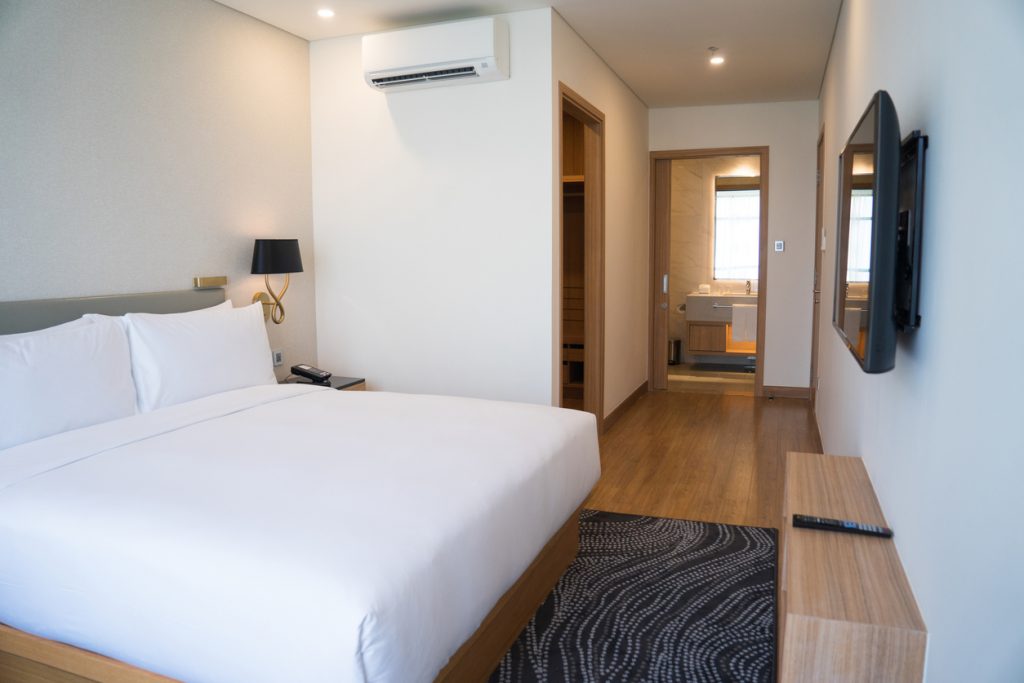
Mini-Split Air Conditioner
Mini-splits are heating and cooling systems that allow you to control the temperatures in an individual room or a few smaller rooms.
Mini-split systems employ two main components:
1. An outdoor compressor/condenser
2. An indoor air-handling unit(s) (evaporator)
Mini-splits are easy to install usually requiring only a three-inch hole through a wall for the conduit; which houses the power and communication cables, copper tubing, and a condensation drain line, linking the outdoor and indoor units.
Determine the Correct BTU Size for Your Hotel Room or Apartment Community
Choosing the right size PTAC, Through-the-Wall (TTW) or VTAC air conditioner for your rooms is critical for guest satisfaction. Before you start looking, it is helpful to know the square footage of the rooms, the dimensions of the unit(s) needed and the voltage and amperage needed. The majority of all PTACS are 42″ x 16″, and TTW usually is 26″ x 15-5/8″.
PTACs and TTWs come in several BTU sizes – from 7,000 to 15,000. Most hotel rooms run from 150 square feet to 600 square feet and require a unit within the 7,000 to 12,000 range. If a unit is underpowered, it will not efficiently cool or heat the room and may cause the air conditioner to overheat. If the model selected is too large for the space, it will not remove enough moisture making the room feel clammy, dewy and uncomfortable.
Use the handy guide to help you with your initial research. Consult with your Allied Appliance Sales Representative, who will walk you through the rest of the questions and make sure you get the unit that has the proper BTU, amperage, and voltage for your space. They can also help you determine whether it would be best to get a Heat/Cool unit with a heat strip or heat pump or go with a Cool Only model. Your rep will make sure that you have the best advice you can get before making your purchase.
| Area (Sq. Ft.) | Capacity (BTU) |
|---|---|
| 100 - 150 | 5,000 |
| 150 - 250 | 6,000 |
| 250 - 300 | 7,000 |
| 300 - 350 | 8,000 |
| 350 - 400 | 9,000 |
| 400 - 450 | 10,000 |
| 450 - 550 | 12,000 |
| 550 - 700 | 14,000 |
| 700 - 1,000 | 18,000 |
Explore PTACs from Brands we Carry
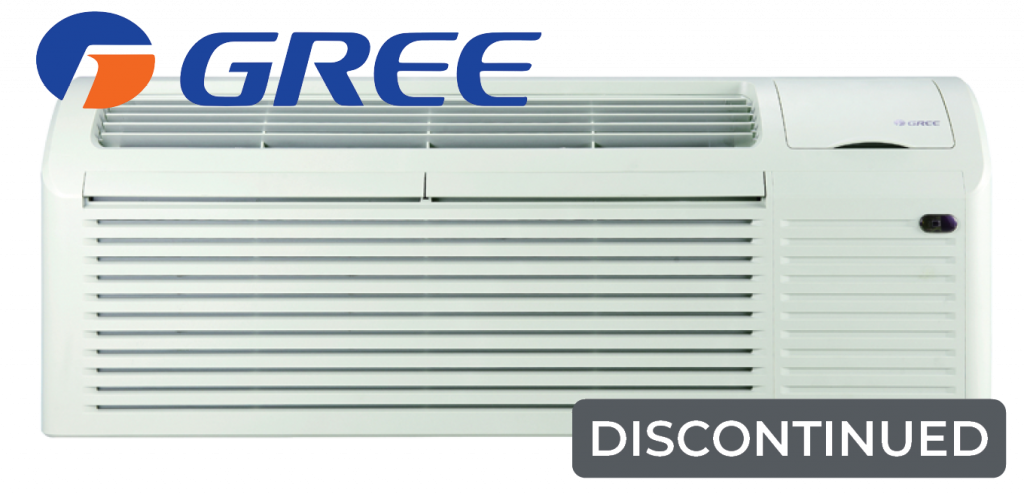
GREE is no longer making PTACs – GE Zoneline PTACs are a recommended replacement. Explore GE PTACs HERE.
Explore TTWs from Brands we Carry
GE Transition Kits Allow You to Replace Any Existing VTAC
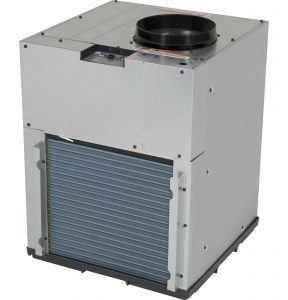
With GE Transition kits you can replace most VTAC brands. Allied Appliance also carries VTACs from Islandaire, Friedrich, Amana and First Co. Call your Allied Sales rep to learn more. Explore GE VTAC Air Conditioners.
Shop Accessories
Keep Your PTAC Running at Peak Efficiency by Following These Maintenance Tips
If you want to keep your PTACs performing their best and extend the life of the units, put together a monthly and seasonal plan for PTAC maintenance. Allied Appliance has put together a list of items that you should routinely checked on a monthly basis as well as a list of items that require a once a year approach. Click here to learn more.
Heat Pumps vs Heat Strip – It Makes a Difference
Knowing the difference (and the benefits) of heat pump versus heat strip can save you a lot of money over the life of your PTAC. Click here to learn more about about the difference or call your Allied Appliance Sales Rep and they can explain the differences.
Looking to Save Money Operating Your PTAC?
One of the most efficient ways to accomplish cost reductions is with a wireless energy management system. A leader in the market is Amana’s Eden System featuring a DigiLink controller. It combines the benefits of reduced energy consumption with improved unit maintenance and allows for an easy installation. The Eden System assists hotels, nursing homes, schools, or any building using a PTAC to manage their in-room use. Click here to learn more.
Request a Quote
Need Assistance? Have a Question? Don’t Know Where to Start?
An Allied Sales Representative is ready to help. Fill out your information to be contacted by our team or call 1-800-991-8480.






